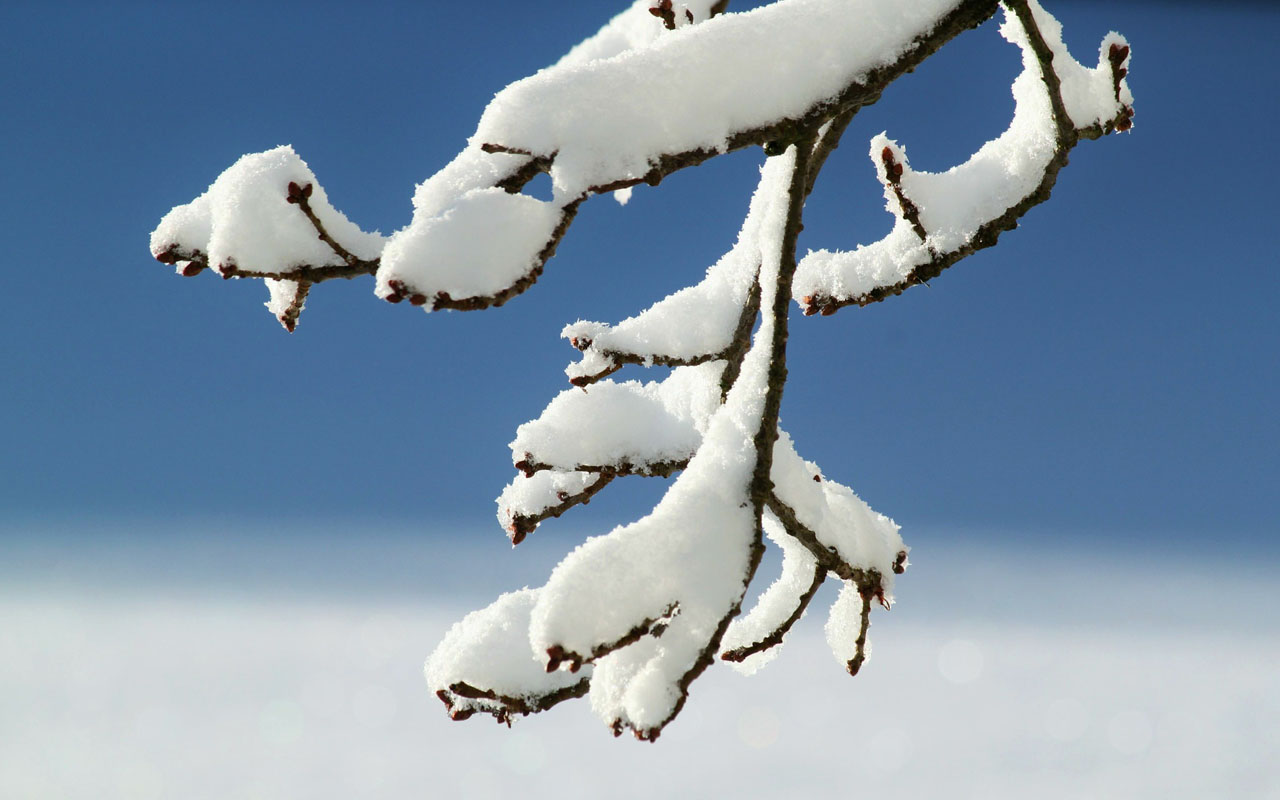
Winter Tree Care Tips for Northern Virginia
After the leaves have fallen, when the days get short and it’s cold and sleeting outside, you may stop thinking about working in your garden. But the cold days of winter are a good time to care for your most important landscape element—your trees.
Winter tree care doesn’t have to be complicated or difficult, but it’s still important to look after your trees during the coldest months of the year. In northern Virginia, follow the winter tree care tips below from December through February. If you take good care of them, your trees will thank you for your dormant season care with vigorous spring growth and a glorious crown of leaves.
Here are the things we recommend doing for your trees in winter.
Prepare for winter with a tree inspection
Before temperatures plummet and snow or ice arrives, take some time to give your trees a thorough inspection. Look for the following:
- Potentially unsafe branches or tree trunks, such as cracks, splits or very long branches – If anything looks unsafe, give us a call.
- Dead, damaged or diseased branches – These should be removed before winter weather can cause them to break.
- Tree limbs, especially larger ones, that hang over your house, car or sidewalk – Consider cabling or bracing to keep them stable through the winter. You could also prune them off.
- Missing mulch around the base of the tree – If there’s less than an inch or two, it’s time to top it up. Be sure you’re doing it correctly though; no mulch volcanoes that will kill your tree!
- Tender trees and shrubs that need a little help getting through the winter – Set aside some time to wrap them up with burlap or a tree wrap.
Prune while trees are dormant
Pruning your trees in winter is often a good choice. Cold temperatures mean most insects and pathogens are not active, so any pruning wounds you make won’t be openings for them to enter. Deciduous trees show their bare branch structure so you can visualize the effect of removed branches. It’s also a good time to remove limbs that might become hazardous and break under snow or ice loads. Read about good pruning practices and services here.
Just be sure you’re pruning the right things. Depending on the species, some trees and shrubs set the following year’s buds during their spring and early summer flowering. You don’t want to lose the blossoms on these fabulous spring-flowering trees!
These covered, dormant buds wait through winter to open. Dormant pruning can remove them, and you’ll lose out on a full spring flush of flowers and leaves. Tree and shrub species that set buds in spring and early summer are best pruned immediately after their flowering, during the growing season and before the plant has used its energy reserves to set its buds.
Apply mulch before the ground freezes
Compost and mulch, applied before winter freezing, will benefit trees during their dormancy and nutrients will be available immediately upon spring bud break and the start of the growing season. It’s even better if you top dress your soil with a layer of compost (no need to till it in) and then layer mulch atop that.
One of the most important reasons to mulch before winter is to protect surface roots. A tree makes a network of tiny feeder roots close to the surface of the soil where oxygen and water are available. Fallen leaves offer these roots a layer of insulation from autumn’s dropping temperatures, and raking up those leaves exposes the roots to fatal, freezing winter temperatures. That’s where mulch comes in.
Applying a thick layer of mulch provides insulation for roots near the surface and can keep them alive until spring. Mulched soil will also warm up faster and stay warm, and you’ve made it harder for weeds to break the surface and take over your spring garden!
Protect tender trees and shrubs
Evergreen shrubs and trees, particularly broad-leafed evergreens like rhododendron and boxwood, can be easily damaged by cold, dry winter weather. Leaves shrivel up and die, leaving an unsightly mess of brown leaves in spring.
Protect your plants from winter die-back by wrapping them in burlap or spraying with an anti-desiccant. Keep in mind that the weather must be above freezing to spray and you may need to apply it several times over the winter.
Ornamental trees with thin bark and young or newly-planted trees can be susceptible to sunscald when exposed to harsh sunlight after the leaves have fallen. Protect them by wrapping the trunk with tree wrap before temperatures dip below freezing.
Check out this article for details about sunscald and how to prevent it.
Complete details on how to protect your trees and shrubs before winter arrives.
Water trees during warmer weather
During the winter, we often have alternating periods of freezing weather and warmer temperatures. Check your new trees during those warm spells. If the ground is clear of snow cover and dry, water thoroughly. As long as the ground isn’t frozen, the tree can take up moisture to keep it hydrated through the winter.
Why you should water your trees in winter

Road salt can harm your plants (and your pets!)
Avoid using salt or de-icers
Road salt is made for ice and asphalt, not trees. Salt can damage or kill trees when a tree’s root system takes up salt. During their dormancy, trees still keep a “skeleton crew” of cells and roots working at a very, very slow pace, exchanging oxygen and water, and can take up road salt that has dissolved into water in the soil.
When possible, we recommend using inert materials like sand, grit or kitty litter instead of salt or ice melt products.
The worst damage occurs to sensitive tree species planted near heavily salted roads with high traffic, especially when they lie downhill, downwind, or have poor drainage. If your roads are salted and if you have periods of clear weather, be sure to irrigate your trees to dilute the damaging salt levels in the soil.
How to avoid tree and plant damage from winter salt and ice-melts
Keep an eye on the snow
Wet, heavy snow and ice can easily break tree branches, especially on evergreens, fast-growing trees and those with a narrow, upright structure (such as Bradford pears). Avoid heavy snow accumulation on shrubs and smaller evergreens by regularly (but gently!) removing snow after a significant snowfall.
If you’re concerned about branches that are bending to the ground on larger trees, remove the snow load on the branches you can easily reach. Please don’t use a ladder or climb the tree; call us to take a look and, if necessary, we’ll remove the snow using the proper safety equipment.
Be careful not break the branches while clearing off snow cover. Lightly brush snow off the branches with your hand or a broom, pushing gently upward and sweeping towards the trunk.
Don’t shake snow-covered branches or hit them with a broom or rake (yes, we’ve seen it happen!). The branches are likely to break if you do that.
To be sure you’re doing the right thing for your trees, see our article on how to help trees recover from snow and ice damage.
Winter Tree Care Tips
In summary, here are the things we recommend doing for trees during northern Virginia winters.
- Thoroughly inspect your trees to identify any issues that could cause safety problems over winter (or have your local tree service professionals at Green Vista Tree Care do it for you)
- Consider pruning trees while they’re dormant
- Apply a thick layer of mulch before the ground freezes
- Protect tender trees and shrubs with burlap or tree wraps
- During warm weather breaks, water newly-planted trees and those exposed to road salt
- Avoid using salt and de-icers that can damage nearby plants
- Watch for snow or ice build-up and gently remove heavy loads (but only if it can be done safely)
In need of tree care services?
Give us a call at 571-244-3838 or request a quote online!
More Articles From Green Vista Tree Care









